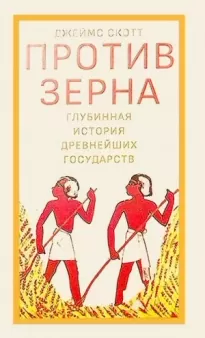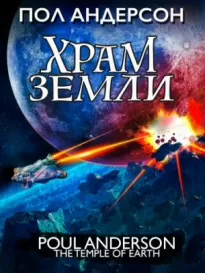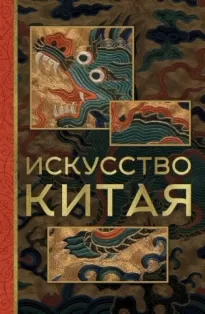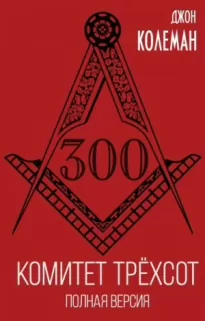McKeown, Thomas. e Origins of Human Disease. Oxford: Blackwell, 1988.
McLean, Rose B. “Cultural Exchange in Roman Society: Freed Slaves and Social Value.” Ph.D. thesis, Princeton University, 2012.
McMahon, Augusta. “North Mesopotamia in the Third Millennium BC.” In Crawford, The Sumerian World, 462–475.
McNeill, J. R. Mountains of the Mediterranean World: An Environmental History. Cambridge: Cambridge University Press, 1992.
_____. “The Anthropocene Debates: What, When, Who, and Why?”
Paper Presented to the Program in Agrarian Studies Colloquium, Yale University, September 11, 2015.
McNeill, W. H. Plagues and People. New York: Monticello Editions, History Book Club, 1976.
_____. The Human Condition: An Ideological and Historical View. Princeton: Princeton University Press, 1980.
_____. “Frederick the Great and the Propagation of Potatoes.” In Byron Hollinshead and Theodore K. Rabb, eds., I Wish I’d Have Been ere: Twenty Historians Revisit Key Moments in History, 176–189. New York: Vintage, 2007.
Meek, R. Social Science and the Ignoble Savage. Cambridge: Cambridge University Press, 1976.
Meiggs, Russell. Trees and Timber in the Ancient Mediterranean World. Oxford: Oxford University Press, 1982.
Menu, Bernadette. “Captifs de guerre et dépendance rurale dans l’Égypte du Nouvel Empire.” In Bernade The Menu, ed., La Dépendance rurale dans l’Antiquité égyptienne et proche-orientale. Cairo: Institut Français d’archeologie orientale, 2004.
Mitchell, Peter. Horse Nations: e Worldwide Impact of the Horse on In digenous Societies Post 1492. Oxford: Oxford University Press, 2015.
Mithen, Steven. After the Ice: A Global Human History, 20,000-5000 BC. Cambridge: Harvard University Press, 2003.
Moore, A. M. T., G. C. Hillman, and A.J. Legge. Village on the Euphrates. Oxford: Oxford University Press, 2000.
Morris, Ian. “Early Iron Age Greece.” In Scheidel et al., Cambridge Economic History, 211–241.
_____. Why the West Rules – for Now: e Patterns of History and What They Reveal About the Future. New York: Farrar, Straus and Giroux, 2010.
Mumford, Jeremy Ravi. Vertical Empire: The General Resettlement of the Andes. Durham, N. C.: Duke University Press, 2012.
Nemet-Rejat, Karen Rhea. Daily Life in Ancient Mesopotamia. Peabody, Mass.: Hendrickson, 2002.
Netz, Reviel. Barbed Wire: An Ecology of Modernity. Middletown, Conn.: Wesleyan University Press, 2004.
Nevle, R.J., Bird, D. K., Ruddiman, W. F., Dull, R., and Stinchcomb, G. E., “Ecological-Hydrological Effects of Reduced Biomass Burning in the Neotropics after A. D. 1500,” Geological Society of America; Abstracts with Programs, 2011, vol. 43: 399.
R.J. Nevle et al., “Ecological-Hydrological Effects of Reduced Biomass Burning in the Neo-Tropics After AD 1600,” Geological Society of America Meeting, Minneapolis, October 11, 2011, abstract.
Nissen, Hans J. “The Emergence of Writing in the Ancient Near East.” Interdisciplinary Science Reviews 10, no. 4 (1985): 349–361.
_____. The Early History of the Ancient Near East, 9000–2000 BC. Chicago: University of Chicago Press, 1988.
Nissen, Hans J., Peter Damerow, and Robert S. Englund. Ancient Bookkeeping: Early Writing and Techniques of Administration in the Ancient Near East. Chicago: University of Chicago Press, 1993.
Nissen, Hans J., and Peter Heine. From Mesopotamia to Iraq: A Concise History. Trans. Hans J. Nissen. Chicago: University of Chicago Press, 2009.
O’Connor, David. “Society and Individual in Early Egypt,” in Janet Richards and Mary van Buren, eds. Order, Legitimacy, and Wealth in Ancient States, 21–35.
O’Connor, Richard A. “Agricultural Change and Ethnic Succession in Southeast Asian States: A Case for Regional Anthropology.” Journal of Asian Studies 54, no. 4 (1995): 968–996.
Oded, Bustenay. Mass Deportations and Deportees in the Neo-Assyrian Empire. Weisbaden: Reichert, 1979.
Ottoni, Claudio, et al. “Pig Domestication and Human-Mediated Dispersal in Western Eurasia Revealed Through Ancient DNA and Geometric Morphometrics.” Molecular Biology and Evolution 30, no. 4 (2012): 824–832.
Padgug, Robert A. “Problems in the Theory of Slavery and Slave Society.” Science and Society 49, no. 1 (1976): 3-27.
Panter-Brick, Catherina, Robert H. Layton, and Peter Rowley-Conwy, eds. Hunter-Gatherers: An Interdisciplinary Perspective. Cambridge: Cambridge University Press, 2001.
Park, Thomas. “Early Trends Toward Class Stratification: Chaos, Common Property, and Flood Recession Agriculture.” American Anthropologist 94 (1992): 90-117.
Paulette, Tate. “Grain, Storage, and State-Making in Mesopotamia, 3200–2000 BC.” In Linda R. Manzanilla and Mitchel S. Rothman, eds., Storage in Complex Societies: Administration, Organization, and Control, 85-109. London: Routledge, 2016.
Perdue, Peter C. Exhausting the Earth: State and Peasant in Hunan, ij00–i8j0 AD. Cambridge: Harvard University Press, 1987.
_____. China Marches West: The Ching Conquest of Central Eurasia. Cambridge: Harvard University Press, 2005.
Pinker, Steven. The Better Angels of Our Nature: Why Violence Has Declined. New York: Penguin, 2011.
Pollan, Michael. The Botany of Desire: A Plant}s-Eye View of the World. New York: Random House, 2001.
Pollock, Susan. “Bureaucrats and Managers, Peasants and Pastoralists, Imperialists and Traders: Research on the Uruk and Jemdet Nasr Periods in Mesopotamia.” Journal of World Prehistory 6, no. 3 (1992): 297–336.
_____. Ancient Mesopotamia: The Eden ttat Never Was. Cambridge: Cambridge University Press, 1999.
Ponting, Clive. A Green History of the World: The Environment and the Collapse of Great Civilizations. New York: Penguin, 1993.
Porter, Anne. Mobile Pastoralism and the Formation of Near Eastern Civilization: Weaving Together Societies. Cambridge: Cambridge University Press, 2012.
Possehl, Gregory L. “The Mohenjo-Daro Floods: A Reply.” American Anthropologist 69, no. 1 (1967): 32–40.
Postgate, J. N. Early Mesopotamia: Society and Economy at the Dawn of History. London: Routledge, 1992.
_____. “A Sumerian City: Town and Country in the 3rd Millennium B.C.” Scienza deWAntichita Storia Archaeologia 6–7 (1996): 409–435.
Pournelle, Jennifer. “Marshland of Cities: Deltaic Landscapes and the Evolution of Early Mesopotamian Civilization.” Ph.D. thesis, University of California at San Diego, 2003.
_____. “Physical Geography.” In Crawford, Sumerian World, 13–32.
Pournelle, Jennifer, and Guillermo Algaze. “Travels in Edin: Deltaic Resilience and Early Urbanism in Greater Mesopotamia.” In H. Crawford et al., eds., Preludes to Urbanism: Studies in the Late Chalcolithic of Mesopotamia in Honour of Joan Oates, 7-34. Oxford: Archaeopress, 2010.
Pournelle, Jennifer, Nagham Darweesh, and Carrie Hritz. “Resilient Landscapes: Riparian Evolution in the Wetlands of Southern Iraq.” In Dan Lawrence, Mark Altaweel, and Graham Philip, eds., New Agendas in Remote Sensing and Landscape Archaeology in the Near East. Chicago: Oriental Institute of the University of Chicago, forthcoming.
Price, Richard. Maroon Societies: Rebel Slave Communities in the Americas, 2nd ed. Baltimore: Johns Hopkins University Press, 1979.
Pyne, Stephen. World Fire: The Culture of Fire on Earth. Seattle: University of Washington Press, 1977.
Radkau, Joachim. Nature and Power: A Global History of the Environment. Cambridge: Cambridge University Press, 2008.
Radner, Karen. “Fressen und gefressen werden: Heuschrecken als Katastrophe und Delikatesse im altern Vorderen Orient.” Welt des Orients 34 (2004): 7-22.
_____. “The Assyrian King and His Scholars: The Syrio-Anatolian and Egyptian Schools,” W. Lukic and R. Mattila, eds., Of Gods, Trees, Kings, and Scholars: Neo Assyrian and Related Studies in Honour of Simo Parpola, Studia Orientalia 106, 221–233. Helsinki: Finnish Oriental Society, 2009.
Ratchnevsky, Paul. Genghis Khan: His Life and Legacy. Trans. T. N. Haining. London: Wiley-Blackwell, 1993.
Redman, Charles. Human Impact on Ancient Environments. Tucson: University of Arizona Press, 1999.
Reid, Anthony. Southeast Asia in the Age of Commerce, vol. 1, The Lands Below the Winds. New Haven: Yale University Press, 1988.
Renfrew, Colin, and John F. Cherry, eds. Peer Polity Interaction and Socio-Political Change. New Directions in Archaeology. Cambridge: Cambridge University Press, 1986.
Richards, Janet, and Mary van Buren. Order, Legitimacy, and Wealth in Ancient States. Cambridge: Cambridge University Press, 2000.
Richardson, Seth, ed. Rebellions and Peripheries in the Cuneiform World. American Oriental Series 91. New Haven: American Oriental Society, 2010.
_____. “Early Mesopotamia: The Presumptive State.” Past and Present, no. 215 (2012): 3-48.
_____. “Building Larsa: Labor-Value, Scale, and Scope-of-Economy in Ancient Mesopotamia.” In Steinkeller and Hudson, Labor in the Ancient World, 237–328.
Riehl, S. “Variability in Ancient Near Eastern Environmental and Agricultural Development.” Journal of Arid Environments 86 (2011): 1–9.
Rigg, Jonathan. The Gift of Water: Water Management, Cosmology, and the State in Southeast Asia. London: School of Oriental and African Studies, 1992.
Rindos, David. The Origins of Agriculture: An Evolutionary Perspective. San Diego: Academic Press, 1984.
Roosevelt, Anna Curtenius. “Population, Health, and the Evolution of Subsistence: Conclusions from the Conference.” In M. N. Cohen and G.J.Armelagos, eds., Paleopathology and the Origins of Agriculture, 259–283. Orlando: Academic Press, 1984.
Rose, Jeffrey I. “New Light on Human Prehistory in the Arabo-Persian Gulf Oasis.” Current Anthropology 51, no. 6 (2010): 849–883.
Roth, Eric A. “A Note on the Demographic Concomitants of Sedentism.” American Anthropologist 87, no. 2 (1985): 380–382.
Rowe, J. H., and John V. Murra. “An Interview with John V. Murra.” Hispanic American Historical Review 64, no. 4 (1984): 633–653.
Rowley-Conwy, Peter, and Mark Zvelibil. “Saving It for Later: Storage by Prehistoric Hunter-Gatherers in Europe.” In Halstead and O’Shea, Bad Year Economics, 40–56.
Ruddiman, William. “The Anthropogenic Greenhouse Era Began Thousands of Years Ago,” Climatic Change 16 (2003): 261–293.
Runnels, Curtis, et al. “Warfare in Neolithic Thessaly: A Case Study.” Hesperia 78 (2009): 165–194.
Sahlins, Marshall. Stone Age Economics. Chicago: Aldine, 1974.
Saller, Richard P. “Household and Gender.” In Scheidel et al., Cambridge Economic History, 87-112.
Sallers, Robert. “Ecology.” In Scheidel et al., Cambridge Economic History, 15–37.
Santos-Granero, Fernando. Vital Enemies: Slavery, Predation, and the Amerindian Political-Economy of Life. Austin: University of Texas Press, 2009.
Sawyer, Peter. “The Viking Perspective.” Journal of Baltic Studies 13, no. 3 (1982): 177–184.
Scheidel, Walter. “Quantifying the Sources of Slaves in the Early Roman Empire.” Journal of Roman Studies 87, no. 19 (1997): 156–169.
_____. “Demography.” In Scheidel et al., Cambridge Economic History, 38–86.
Scheidel, Walter, Ian Morris, and Richard Saller, eds. The Cambridge Economic History of the Greco-Roman World. Cambridge: Cambridge University Press, 2007.
Schwartz, Glenn M., and John J. Nichols, eds. After Collapse: The Regeneration of Complex Societies. Tucson: University of Arizona Press, 2006.
Scott, James C. Seeing Like a State: How Certain Schemes to Improve the Human Condition Have Failed. New Haven: Yale University Press, 1998.
_____. The Art of Not Being Governed: An Anarchist History of Upland Southeast Asia. New Haven: Yale University Press, 2009.
Seri, Andrea. The House of Prisoners: Slaves and State in Uruk During the Revolt Against Samsuiluna. Boston: de Gruyter, 2013.
Sherratt, Andrew. “Reviving the Grand Narrative: Archaeology and Long-term Change,” Journal of European Archaeology (1995): 1-32.
_____. Economy and Society in Prehistoric Europe: Changing Perspectives.
Edinburgh: Edinburgh University Press, 1997.
_____. “The Origins of Farming in South-West Asia.” Archatlas 4.1 (2005), http://www.archatlas.dept.shef.ac.uk/Origins-Farming/Farming.php.
Sherratt, Susan. “‘Sea Peoples’ and the Economic Structure of the Late Second Millennium in the Eastern Mediterranean,” in Gitin et al., Mediterranean Peoples in Transition, 292–313.
Shipman, Pat. The Invaders: How Humans and tteir Dogs Drove Neanderthals to Extinction. Cambridge: Belknap Press of Harvard University Press, 2015.
Skaria, Ajay. Hybrid Histories: Forests, Frontiers, and Wildness in Western India. Oxford: Oxford University Press, 1999.
Skrynnikova, Tatanya D. “Mongolian Nomadic Society of the Empire Period.” In Grinin et al., The Early State, 525–535.
Small, David. “Surviving the Collapse: The Oikos and Structural Continuity Between Late Bronze Age and Later Greece.” In Gitin et al., Mediterranean Peoples in Transition, 283–291.
Smith, Adam T. “Barbarians, Backwaters, and the Civilization Machine: Integration and Interruption Across Asia’s Early Bronze Age Landscapes.” Keynote Presentation at Asian Dynamics Conference, University of Copenhagen, October 22–24, 2014.
Smith, Bruce D. The Emergence of Agriculture. New York: Scientific American Library, 1995.
Smith, Bruce D. “Low Level Food Production.” Journal of Archaeological Research 9, no. 1 (2001): 1-43.
Smith, Monica L. “How Ancient Agriculturalists Managed Yield Fluctuations Through Crop Selection and Reliance on Wild Plants: An Example from Central India.” Economic Botany 60, no. 1 (2006): 39–48.
Starr, Harry. “Subsistence Models and Metaphors for the Transition to Agriculture in Northwestern Europe.” Michigan Discussions in Anthropology 15, no. 1 (2005).
Steinkeller, Piotr. “The Employment of Labor on National Building Projects in the Ur III Period”, in Steinkeller and Hudson, Labor in the Ancient World, 137–236.
Steinkeller, Piotr and Michael Hudson. “Introduction: Labor in the Early States: An Early Mesopotamian Perspective,” in Steinkeller and Hudson, eds. Labor in the Ancient World, 1-35.
Steinkeller, Piotr, and Michael Hudson, eds. Labor in the Ancient World, vol. 5, International Scholars Conference on Ancient Near Eastern Economies. Dresden: LISLET Verlag, 2015.
Tainter, Joseph A. The Collapse of Complex Societies. Cambridge: Cambridge University Press, 1988.
_____. “Archaeology of Overshoot and Collapse.” Annual Review of Anthropology 35 (2006): 59–74.
Taylor, Timothy. “Believing the Ancients: Quantitative and Qualitative Dimensions of Slavery and the Slave Trade in Later Premodern Eurasia.” World Archaeology 33, no. 1 (2001): 27–43.
Tenney, Jonathan S. Life at the Bottom of Babylonian Society: Servile Laborers at Nippur in the 14th and ijth Centuries BC. Leiden: Brill, 2011.
Thucydides. The Peloponnesian War. Trans. Rex Warner. New York: Penguin, 1972.
Tilly, Charles. “War Making and State Making as Organized Crime.” In Peter Evans, Dietrich Rueschmeyer, and Theda Skocpol, eds., Bringing the State Back In, 169–191. Cambridge: Cambridge University Press, 1985.
Tocqueville, Alexis de. Democracy in America, vol. 2. New York: Vintage, 1945.
Trigger, Bruce G. Understanding Early Civilizations: A Comparative Study. Cambridge: Cambridge University Press, 2003.
Trut, Lyudmilla. “Early Canine Domestication: The Farm Fox Experiments.” Scientific American 87, no. 2 (1999): 160–169.
Tsing, Anna Lowenhaupt. The Mushroom at the End of the World: On the Possibility of Life in Capitalist Ruins. Princeton: Princeton University Press, 2015.
Ucko, Peter J., and G. W. Dimbleby, eds. The Domestication and Exploitation of Plants and Animals. Proceedings of a Meeting of the Research Seminar in Archaeology and Related Subjects held at the Institute of Archaeology, London University. Chicago: Aldine, 1969.
Vansina, Jan. How Societies Are Born: Governance in West Central Africa before 1600. Charlottesville: University of Virginia Press, 2004.
Walker, Phillip L. “The Causes of Porotic Hyperostosis and Cribra Orbitalia: A Reappraisal of the Iron-Deficiency-Anemia Hypothesis.” American Journal of Physical Anthropology 139 (2009): 109–125.
Wang Haicheng. Writing and the Ancient State: Early China in Comparative Perspective. Cambridge: Cambridge University Press, 2014.
Weber, David. Barbaros: Spaniards and Their Savages in the Age of Enlightenment. New Haven: Yale University Press, 2005.
Weiss, H., et. al. “The Genesis and Collapse of Third Millennium North Mesopotamian Civilization,” Science 261 (1993): 995-1004.
Wengrow, David. The Archaeology of Early Egypt: Social Transformation in North-East Africa, 10,000 to 2,6j0 BC. Cambridge: Cambridge University Press, 2006.
_____. What Makes Civilization: The Ancient Near East and the Future of the West. Oxford: Oxford University Press, 2010.






